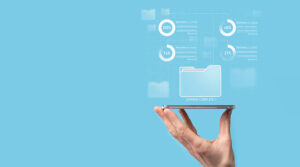In today’s data-driven world, effectively managing information is paramount for businesses of all sizes. Microsoft Access emerges as a powerful tool in this domain, offering robust data management and analysis capabilities. This guide explores the nuances of Microsoft Access, providing insights into its functionality, usage, and advantages. From understanding the basics to leveraging its advanced features, we’ll embark on a journey to unlock the potential of Microsoft Access for your business and personal projects.
Microsoft Access holds a unique position in the landscape of database management systems. It is not just a tool for storing information; it’s a gateway to sophisticated data manipulation, analysis, and reporting. Whether you’re a small business owner, a student, or a professional looking to streamline your data processes, understanding how to use Microsoft Access can significantly enhance your productivity and decision-making capabilities. It’s also a great skill for existing or aspiring project managers to gain, along with the others you can learn in this online project management bootcamp.
What is Microsoft Access?
Microsoft Access is a database management system (DBMS) from Microsoft that combines the relational Microsoft Jet Database Engine with a graphical user interface and software development tools. It is part of the Microsoft Office suite of applications, included in the Professional and higher editions or sold separately. Access is designed to make it easier to use database-related web apps and to scale from small, personal projects to complex business applications.
How Does MS Access Work?
At its core, Microsoft Access stores data in tables that resemble spreadsheets. Each table can hold data about a different subject, making it easier to organize and retrieve. Relationships can be established between tables to connect data, enabling complex queries, reports, and forms. Access’s Jet Database Engine processes these data interactions, allowing for sophisticated data manipulation and analysis.
Also Read: What is Project Resource Management? Everything You Need to Know
How to Use Microsoft Access: Top Use Cases
Microsoft Access is versatile, catering to various needs, including:
- Creating Databases: From simple contact lists to complex inventory systems.
- Data Analysis: With powerful sorting, query, and reporting tools.
- Application Development: Build user-friendly interfaces for databases.
- Integration: Works seamlessly with other Microsoft products, particularly Excel, allowing for the exchange and enhancement of data.
MS Access 2007 vs MS Access 2010
Comparing versions, MS Access 2007 introduced significant UI improvements and new data types and features like attachment data types, multivalued fields, and enhanced integration with SharePoint. MS Access 2010 built upon this by enhancing user interface customization, introducing data macros, and better web services integration. For users deciding between versions, the choice hinges on the specific needs for web integration and UI customization.
Benefits of MS Access
- Flexibility: Tailors to both simple and complex projects.
- Ease of Use: Intuitive design and templates make it accessible for beginners.
- Powerful Integration: Works well with other Microsoft tools, enhancing functionality.
- Cost-Effective: Available within the Microsoft Office suite, reducing additional software costs.
How to Download Microsoft Access?
To download Microsoft Access, follow these steps:
- Visit the official Microsoft Office website.
- Choose the Office version that includes Access (usually the Professional version).
- Purchase the suite or start a trial.
- Follow the prompts to download the installer to your computer.
How to Install Microsoft Access
After downloading, installation is straightforward:
- Locate the downloaded installer and double-click to start.
- Follow the on-screen instructions, choosing your installation preferences.
- Once installation is completed, Access will be available with your other Office applications.
How to Use Microsoft Access Online
Microsoft offers Access as part of its cloud-based Office 365 services, allowing users to utilize Access from anywhere. This online version ensures that databases are accessible and editable from any device, enhancing collaboration and flexibility.
Features of Microsoft Access
Key features include:
- Comprehensive Database Templates: Jumpstart your database design.
- Form and Report Generators: Create user-friendly interfaces and reports.
- Query Designer: Allows for complex data retrieval.
- Macros and VBA Support: Automate tasks and extend functionality.
- Integration Capabilities: Seamless connection with Excel, Outlook, and SharePoint.
Also Read: Best Apps for Project Management You Should Know in 2024
How to Use Access with Excel
Integrating Microsoft Access with Excel is a powerful way to extend the functionality of both programs, allowing users to leverage the strengths of each. Here’s how to seamlessly use Access with Excel:
Exporting Data from Access to Excel
- Simple Export: In Access, select the table or query you want to export. Go to the “External Data” tab and choose “Excel.” Follow the prompts to export your data, choosing the format and destination for your Excel file.
- Data Refresh: Set up a data connection from Excel to Access so that when the data in Access is updated, you can refresh the data in Excel with just a few clicks. This is ideal for reporting and analysis in Excel based on the latest data in Access.
Importing Data from Excel to Access
- Creating a New Table: Use the “External Data” tab in Access and select “New Data Source” > “From File” > “Excel.” Browse to your Excel file and follow the prompts to import the data by creating a new table or appending to an existing one.
- Linking to Excel Data: You can link to the Excel file instead of importing. This means any updates in the Excel file will be reflected in Access. This is useful for dynamic datasets that are maintained in Excel but need to be accessible from Access.
Querying Access Data in Excel
- Microsoft Query: Use Microsoft Query in Excel to run complex queries on Access databases directly from Excel. This allows for advanced data analysis and visualization using Excel’s powerful tools based on data stored in Access.
Automation and Advanced Integration
- VBA Scripting: For advanced users, Visual Basic for Applications (VBA) can automate data exchanges between Access and Excel, including complex transformations and analyses.
Best Practices for Using Microsoft Access with Excel
- Consistent Data Types: Ensure data types between Excel and Access are consistent to avoid import/export errors.
- Data Integrity: Use Access for data storage and management to leverage its database management capabilities and use Excel for data analysis and visualization.
- Security: Be mindful of data security, especially when handling sensitive information. Utilize Access’s security features to protect your data.
By mastering these techniques, users can enjoy the best of both worlds—Access’s robust database management and Excel’s analytical prowess—making data management tasks more efficient and insightful.
Wrapping Up
Microsoft Access is an invaluable tool for those looking to manage data efficiently. Whether you’re a novice learning to use Microsoft Access or an experienced user exploring its advanced features, Access offers a comprehensive set of tools to meet your needs. Users can enhance their data management processes by understanding how to use Access databases and integrate Access with Excel, making informed decisions based on accurate, well-organized information. With this guide, we hope you’re equipped to navigate the world of Microsoft Access, unlocking the full potential of your data.
In addition, it’s a great tool for project managers to master. Coupled with the knowledge and skills you can learn in this project management program, you can boost your career positively.
Frequently Asked Questions (FAQ)
1. How to use MS Access?
To use Microsoft Access effectively, follow these steps:
- Start with a Plan: Define the purpose of your database. Knowing what you aim to achieve helps in structuring your database effectively.
- Learn the Basics: Familiarize yourself with the Access interface. Explore the ribbon and where tools like Tables, Queries, Forms, and Reports are located.
- Create Your First Database: Use templates or start from scratch. Begin by setting up tables to store your data.
- Establish Relationships: Connect your tables logically to ensure your data is well organized and facilitates efficient retrieval.
- Utilize Forms for Data Entry: Create forms for a more user-friendly way of entering data into your tables.
- Generate Reports: Use the reporting tools to compile and visualize your data for presentations or decision-making.
- Explore Queries: Queries allow you to retrieve specific data from your database. They can be simple or complex, depending on your needs.
2. How quickly can I learn Microsoft Access?
The time it takes to learn Microsoft Access varies based on your familiarity with database concepts and dedication. A basic understanding of Access’s core functions (tables, queries, forms, and reports) can take a few weeks of consistent practice for those new to databases. Becoming proficient in more advanced features, such as SQL integration and VBA scripting, may take several months or more. Utilizing online tutorials and courses and practicing with real-life projects can accelerate the learning process.
3. Is Access better than Excel?
Whether Access or Excel is better depends on the task at hand. Excel excels at data analysis and visualization for comparatively smaller data sets and is more user-friendly for those calculations and tasks. On the other hand, Access is designed for managing and storing larger volumes of data, enabling more complex queries, and building relational databases. For tasks requiring robust database management and the ability to handle complex queries, Access is the better choice. Excel might be preferable for simpler data analysis and spreadsheet tasks.
4. Is Microsoft Access a good skill to have?
Yes, Microsoft Access is a valuable skill, especially for those working in data management, analysis, and reporting roles. It complements other data management and analysis skills, offering a unique blend of database management capabilities with user-friendly interface design. Mastery of Access can make you more versatile in handling data-related tasks, improve your efficiency in managing large datasets, and enhance your attractiveness to employers in various industries.
5. Is it easy to use Microsoft Access?
Microsoft Access is designed with ease of use in mind, particularly for those already familiar with the Microsoft Office suite. Beginners might find a learning curve, especially when understanding relational database concepts and more advanced features like SQL queries and VBA programming. However, with the many templates, intuitive design, and comprehensive support materials available, most users can start building basic databases relatively quickly. As with any sophisticated software, practice and continued learning will significantly improve ease of use.
You might also like to read:
How to Measure Project Success? A 2024 Guide
Remote Project Management: How to Manage Remote Teams Effectively
What are Project Management Skills? Here are Top Skills You should Know in 2024







